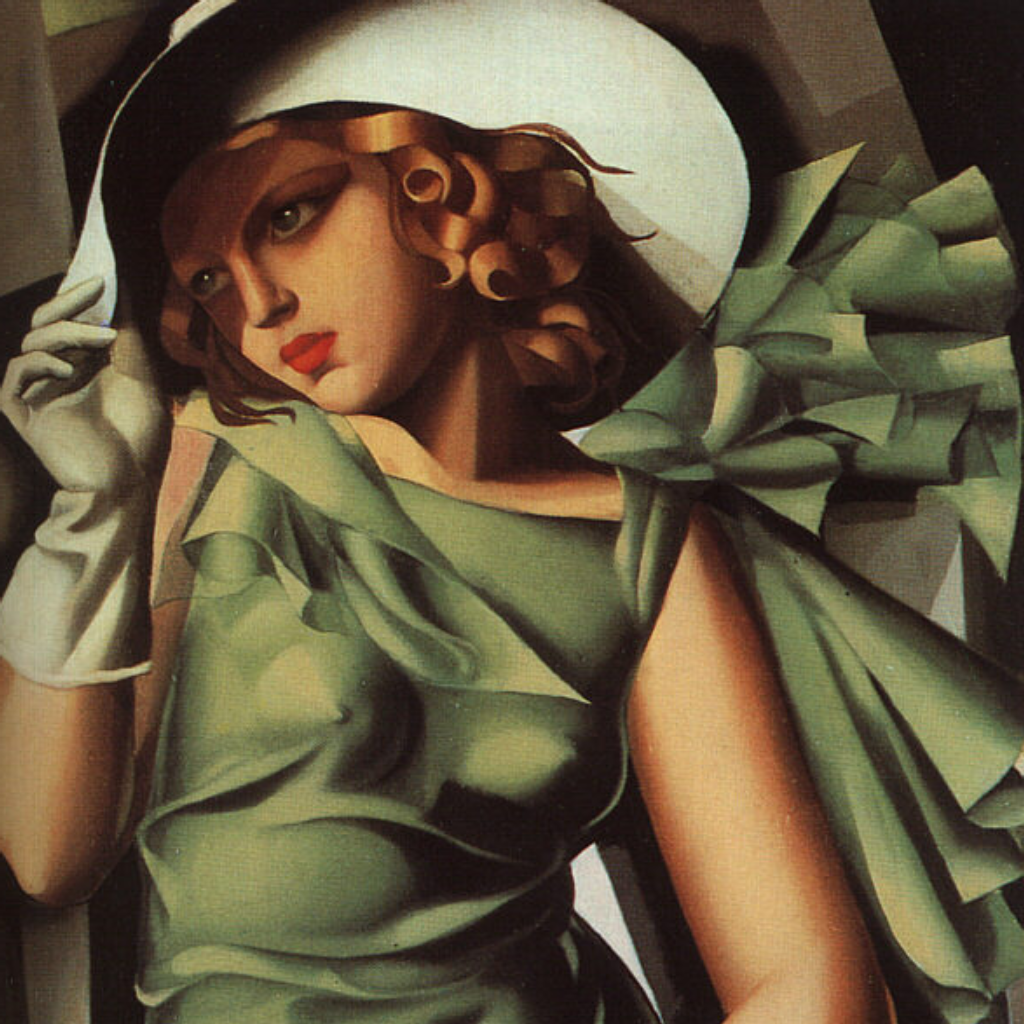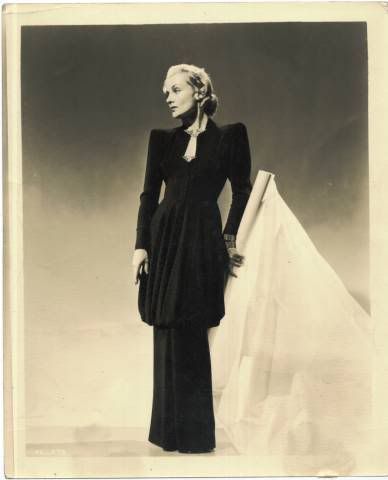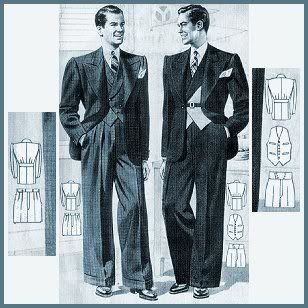
1920-talets syn på mode som något viktigt, och en form av konst dröjde kvar in på 30-talet. Småningom började dock sviterna av den stora världsomspännnade depressionen synas också i modet. Man sökte stabilitet och en återgång till de traditionella värdena.
På 1930 talet kom en ny sorts siluett, från timglasfiguren, till den raka pojkaktiga på 1920 talet, sattes nu störst fokus på axlarna. Man hade vida fjärils eller puff-ärmar och både män och kvinnor använde axelvaddar för att skapa den v-formade överkroppen. Kvinnans midja blev åter viktig, man ville att kvinnor skulle vara mer traditionella och inte skapa oreda i samhället genom sitt ifrågasättande av könsroller och familjevärden. Också kjolarna skulle vara längre, man sökte helt enkelt ett mindre utmanande mode. Trots det höll sig byxmodet och det korta håret för kvinnorna kvar ända fram till början av 40-talet
Det ledande modeinfluenserna kom från Amerika, delvis för att Frankrike hade stora samhälleliga problem, men också för att Amerika och Hollywoods musikal och film kultur upplevde ett uppsving och tog sig över atlanten. Idol-kulturen, med mode och filmstjärneförebilder hade stor inverkan på modevärlden och folks sätt att ta till sig trenderna.
Accessoarerna blev allt viktigare, väskor, skor, handskar och hattar blev essentiella för att skapa den rätta helheten. Skorna hade runda tår, och breda klackar, den lilla huvudnära hatten från 20-talet var fortsättningsvis populär.
Under andra världskriget,i början av 40-talet,upplevde modevärlde en stagnering. Folk hade inte råd att köpa så mycket nya kläder och det ansågs i övrigt opassande att vara allt för glamorös och fåfäng. 
Kvinnor bar kjolar som räckte ända ner till knäna eller längre, enkla blusar och jackor. Midjan var smalare och håret blev längre. Samtidigt började kvinnor använda byxor i större utsräckning, detta var praktiskt eftersom de utförde mycket av männens arbete.
För männen kom också starka influenser från film och musikal-världen. Bland de största förebilderna har vi Fred Astaire, Cary Grant, and Gary Cooper. De var först med den sk. London-draperingen. Kostymerna blev lättare, lösare och bekvämare. Mera tyg vid axlarna, ärmarna och byxbuntarna, samtidigt som midjan lyftes fram m.h.a. insnitt.
Krigets infuelser i mansmodet syntes mest i fråga om en mer dämpad färgskala, men också skärningen blev enklare och mer uniformlik. De överdrivna propotionerna ansågs opassande.
Förövrigt, kom ett allt sportigare mode, män fick klä sig ledigare, i bara skjorta och pullover, eller kofta, bomullsbyxor och lätta, sportiga skor.
30 och 40-talet var en tid av krig och mellankrigs tid, därför fanns det inte varken intresse eller möjlighet att vara allt för experimentiell eller vågad. Detta är inte nödvändigtvis bara något negativt, rent stilmässigt är detta modet mycket slitstarkt och klassiskt, stilrent och kvinnligt. 
The fashion few of the 1920's as something important and artistic lived on into the new decade. After a while the social effects of the great economical-depression started to show in fashion. There was a huge need for stability and a return to traditional values.
In the 1930's a new silhuette became popular. From the hourglass-shape, to the straight, boyish ideal of the 1920's, the focus shifted to the shoulders. Women wore wide butterfly and banjo sleeves and both men and women used shoulder pads to create the right v-shaped body. The women's waist became more important again, there was a striving to put women back in the traditional role, so that they wouldn't stir up any kind of disturbance to the order of society, by their questioning of family values. Also the skirts became longer, there was simply no place for anything challenging. Still, both the short hair and throusers remained fashionable until the early 40's.
The leading fashion influenses came from America, both because France struggled with internal problems but also due to the american musical and movie culture that had rised in popularity and started to conquer the european continent. The idol-phenomenon with fashion and movie stars as the ideal, changed the fashion industry and the way people recieved the trends.
The accessories became moore important, hats, bags, shoes and gloves where essential in creating the right look. The shoes had rounded tops, and high, wide heels, the smaller 1920's hat was still the most popular.
During the second world war, in the beginning of the 1940's, the fashion industry entered a low key phase. People couldn't afford to buy new clothes and it was not appropriate to be too glamourous and occupied with superfical things. Women used skirts down to the knees or longer, blouses, and simple-cut jackets. The waist was smaller and the hair longer. At the same time women started to use more trousers this was mostly because the men were in battle and the women did their work.
The insipration from popular culture also inflected the male fashion. As the most important icons we have Fred Astaire, Gary Cooper and Cary Grant. They established the so called London-draping. The suit became looser, more comfortable and lighter. More fabric around the shoulders, sleeves, and trousers. The waist was brought out by a slimmer cut.

The war effected the male-fashion in the color frame, more down to earth colours, but also the cut became slimmer and, more uniform-like. The over size proportions were not appropriate.
The sport fashion was a newcomer in fashion. Men could wear just the shirt, a pullover, cotton trousers and pair of light, sport shoes.
The 1930's and 40's was a time of war and recovery. That is why there wasn't really an interest in being too experimental and daring in fashion. This is not just something negative, from a style's point of view the fashion of these two decades are both very classical, feminine and timeless.
måndag 21 april 2008
1930 & 1940-axelvaddar och krig, shoulderpads and war.
Prenumerera på:
Kommentarer till inlägget (Atom)


1 kommentar:
Dehär bloggarna om modehistoria är jätteintressanta!
Skicka en kommentar